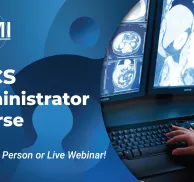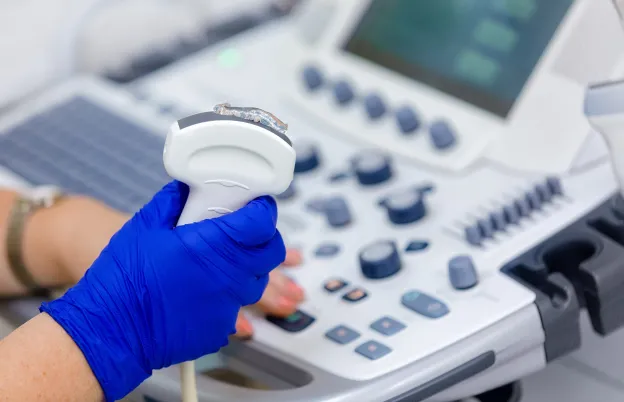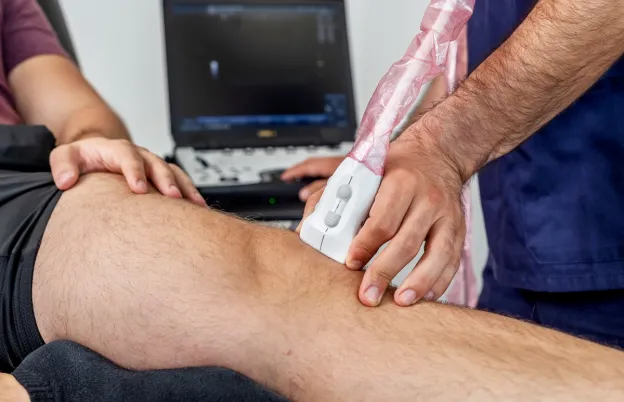Stepping from the console to the command chair as an imaging manager is a planned progression that blends leadership, communication, and expanded technical depth. For sonographers, radiologic technologists, and ultrasound techs, this practical guide maps out how to move beyond the technologist role into supervision and management: from cross-training in additional modalities to earning credentials that signal readiness for responsibility, strengthening collaboration with physicians and medical teams, and staying aligned with quality and compliance standards. You’ll learn how to build supervisory experience on the job, grow a professional network, and navigate the “peer-to-leader” shift. Plus, see real-world pathways from professionals who’ve done it while discovering how MTMI’s world-class continuing education (CE) can accelerate each step.
Why Career Advancement Matters in Medical Imaging
Whether you want more influence on patient care, steadier hours, or a higher ceiling for growth, advancing beyond the entry-level technologist role expands your impact and long-term career resilience.
Staying Competitive in a Rapidly Evolving Field
Imaging technology and practice standards change quickly. This can be due to factors like:
Artificial intelligence (AI)-assisted workflows
New dose-optimization protocols
3D and contrast-enhanced techniques
Evolving accreditation requirements
Moving up pushes you to stay current with modality updates, regulatory expectations, and quality metrics so you can guide your team through change rather than react to it. Cross-training in CT, MRI, ultrasound subspecialties, or mammography — and pairing that with leadership or operations education — signals you’re ready to help set protocols, evaluate equipment, and standardize best practices across the department.
Expanding Your Scope Beyond Entry-Level Roles
Supervisory tracks broaden your responsibilities from performing exams to shaping how the entire service line runs. You’ll help:
Coordinate schedules and staffing.
Coach peers and students.
Liaise with radiologists and vendors.
Streamline workflows.
Support accreditation and compliance efforts.
Examples of roles that provide stepping-stone experiences and build operational judgment and visibility with leadership include:
Lead technologist
Modality coordinator
Shift supervisor
Quality/safety champion
Achieving Greater Job Satisfaction and Earning Potential
With career advancement comes more autonomy, the chance to solve meaningful problems, and the ability to improve both patient experience and team performance. Supervisors influence policies, training, and equipment decisions — work that’s intellectually rewarding and recognized across the organization. Additional credentials and leadership responsibilities often open doors to higher compensation bands and more predictable schedules, while positioning you for future moves into management, education, or specialized operations roles.
Career Paths Beyond the Technologist Role
Below are several directions imaging professionals commonly take as they grow beyond staff roles.
Moving Into Supervisory or Management Positions
You could step into positions like lead technologist, modality supervisor/coordinator, imaging manager, or director to influence scheduling, staffing, protocols, quality, and budgets. You’ll:
Collaborate closely with radiologists, vendors, and administrators.
Track key performance indicators (KPIs) — e.g., turnaround time or repeat/reject rates of images.
Steward accreditation and compliance efforts across the service line.
Helpful credentials include:
Certified Radiology Administrator (CRA)
Lean Six Sigma
Project management training
Cross-training in CT, MRI, mammography, or ultrasound subspecialties
Start by volunteering to precept new hires, lead a protocol update, or chair a safety/quality project — visible wins that demonstrate readiness for responsibility.
Transitioning Into an Educator Role
If you enjoy coaching, consider clinical educator/coordinator, faculty, or program director pathways. These educators:
Design labs and competencies.
Evaluate student performance.
Align curricula with accreditation standards.
Cultivate clinical partnerships.
Employers often prefer a bachelor’s or master’s degree, active registry (e.g., ARRT®, ARDMS), teaching experience, and a strong CE record. Leadership for program directors also benefits from operations and assessment skills. Build your skill set by:
Mentoring students
Creating in-service sessions
Developing simulation activities
Presenting at local, regional, or national conferences
Exploring Other Opportunities
Beyond supervision and education, technologists can pivot into high-impact specialty roles:
Applications/sales with imaging vendors (applications specialist, clinical trainer, clinical manager, account manager), where your modality expertise drives product demos, workflow design, and customer success.
Clinical informatics/PACS administration (DICOM, HL7/RIS, VNA, change management), where CIIP certification can be an advantage and your frontline insight improves imaging IT performance.
Quality and safety roles (e.g., dose management, repeat/reject reduction, MR safety leadership such as MRSO), supporting audits, policy development, and continuous improvement.
Medical physicist assistant positions (where permitted) supporting quality assurance (QA), equipment testing, and regulatory documentation under a physicist’s supervision.
Skills That Drive Career Advancement
Supervisors are trusted to deliver safe, efficient, patient-centered imaging — so developing strengths in leadership, communication, technical breadth, and real-time problem-solving is essential.
Leadership and Team Coordination Skills
Great leaders set priorities that align the team and clear roadblocks. In imaging, that looks like running effective huddles, building fair/transparent schedules, and coordinating cross-coverage when volumes spike or callouts occur. Ideally, leaders will:
Use simple frameworks to standardize workflows.
Track KPIs such as turnaround time and repeat/reject rates.
Coach with specific, timely feedback.
Recognize wins.
De-escalate conflict.
Model psychological safety so technologists feel comfortable surfacing quality or safety concerns early.
Effective Communication With Medical Teams and Patients
Supervisors translate between modalities, radiologists, nurses, and providers — while keeping patients informed and at ease. Consistent, respectful communication builds trust and reduces complaints, ultimately smoothing collaboration across the care team. To do so, make a point to:
Implement read-backs for critical results.
Document handoffs at shift change to prevent errors.
Use clear explanations with patients and confirm understanding, as well as practice service-recovery techniques when delays or reschedules occur.
Technical Expertise and Cross-Training in Multiple Modalities
Depth earns credibility; breadth unlocks flexibility. Mastering protocols, QA/QC processes, and dose-optimization principles in your home modality — and adding post-primary skills in CT, MRI, mammography, or vascular ultrasound — positions you to set standards and keep rooms running. Cross-training also:
Strengthens staffing resilience
Helps during equipment downtime or surges
Prepares you to oversee protocol updates, vendor installs, and accreditation audits with confidence
Problem-Solving and Critical Thinking in High-Pressure Situations
From patient emergencies to system downtime, supervisors must triage quickly and think several steps ahead. Build a habit of situational awareness: assess risk, sequence tasks, deploy the right people, and communicate ETA and constraints to clinicians. The ability to stay calm, decide decisively, and learn systematically is a hallmark of leadership in imaging.
Education and Certifications to Boost Your Credentials
Targeted education and stackable credentials signal readiness for leadership and give you the tools to manage people, quality, and operations — not just exams.
Pursuing Advanced Degrees (Bachelor’s, Master’s, or Doctorate)
A bachelor’s degree in a discipline like imaging sciences or health sciences can meet qualification thresholds for lead or supervisor roles, while master’s programs help you build business and operational fluency. Choose the advanced educational path that fits your goal, with examples including a:
Master of Business Administration (MBA) or Master of Health Administration (MHA) for budgeting, staffing, and strategy
Master of Science (MS) or Doctor of Education (EdD) for academic leadership and curriculum design
MS in Health Informatics if you’re drawn to PACS, workflow, and data projects
In addition, prioritize programs with capstones or practicums you can anchor in your department, and leverage employer tuition assistance when available.
Obtaining Specialized Certifications in Additional Modalities
Post-primary credentials in CT, MRI, or mammography demonstrate breadth and clinical credibility — key for supervising multi-modality teams and building resilient schedules. Pair these with management-focused training to round out your profile:
Lean Six Sigma (Green/Black Belt) for process improvement
Management or healthcare leadership certificates for finance/HR/change management basics
Certified Radiology Administrator, or CRA, credential to validate comprehensive imaging operations knowledge
A practical sequence is:
Earn a second modality.
Lead a small improvement project.
Then, pursue a management certificate or CRA prep as you step into lead roles.
Maintaining CE Credits and Industry Compliance
Consistently meeting registry continuing education requirements and staying inspection-ready shows reliability and leadership maturity.
Build an annual CE plan that blends modality updates with topics like safety, quality, and leadership.
Track standards and align your documentation to the expectations of key bodies.
Keep a centralized CE/compliance tracker so expirations and audit artifacts are always at your fingertips.
Building Experience That Sets You Apart
Hands-on leadership experiences — earned right where you work — prove you’re ready for the next step and give you stories, metrics, and references that stand out.
Volunteering for Leadership Roles on Your Team
This might entail:
Volunteering for charge tech shifts
Serving as a superuser for new equipment or PACS upgrades
Coordinating cross-coverage or call schedules during volume spikes
Offering to lead a protocol standardization effort or a daily huddle
Piloting small fixes and measuring impact
Keep a simple portfolio with before/after metrics, project charters, and lessons learned that demonstrate concrete results tied to patient experience and efficiency.
Mentoring New Technologists or Students
As a mentor, you may become a clinical preceptor and:
Design a structured onboarding checklist.
Set SMART goals for each learner’s first few months.
Model best practices.
Give timely, behavior-based feedback.
Document competency sign-offs to support safe, independent practice.
Track outcomes like reduced orientation time or improved first-attempt success to show the value of your mentorship.
Participating in Quality Improvement and Safety Committees
Join (or start) committees focused on dose management, MRI safety, contrast workflows, or patient throughput. Use basic control charts and brief root-cause analyses to drive changes that stick; think lowering repeat/rejects with positioning aids, smoothing add-ons with a STAT slot policy, or improving scheduling accuracy with standardized orders. Align your work with accreditation readiness and inspectable documentation, and summarize wins in a report you can share with leadership and add to promotion packets.
Networking and Professional Involvement
Strategic networking turns day-to-day experience into visible leadership potential — opening doors to mentorship, projects, and promotions.
Joining Professional Associations
Membership gives you access to CE credits, practice resources, job boards, and volunteer pathways that build your leadership résumé. Start with the association that matches your modality and destination. For example:
Join local affiliates or special interest groups, volunteer on a committee, or submit a short article or webinar. These contributions create credibility and connections.
Attending Industry Conferences and Workshops
Live events concentrate learning and hiring managers in one place.
Prioritize sessions that align with your goals (quality, operations, informatics, safety) and plan CE credits in advance.
Show up with intent; ask vendors about implementation lessons, protocol optimization, and training support.
Consider giving a presentation on a small improvement project, as this can be an efficient way to showcase impact and meet leaders.
Complement conferences with targeted MTMI workshops to deepen skills you can apply immediately on the job.
Building Relationships With Leaders in the Field
Identify several supervisors, managers, educators, or PACS/informatics leads whose paths you admire. Request brief informational conversations where you come with specific questions. Contributing first often leads to mentorship and sponsorship — so offer to help on committee work, onboarding materials, or a small quality project.
Leveraging LinkedIn and Other Professional Platforms
On professional networking platforms, optimize your headline for your next role (e.g., “MRI/CT Technologist | QA & Workflow Improvement | Aspiring Supervisor”) and feature tangible outcomes in your “About” section. Post short reflections on cases (de-identified), or conference takeaways, and comment thoughtfully on leaders’ posts to stay visible without cold messaging. Join relevant groups, follow associations and vendors, and maintain a simple monthly cadence (for instance, share one post, comment on five, connect with three individuals). Over time, your digital footprint will mirror the leadership brand you’re building onsite.
Real-World Examples of Career Growth
Seeing how others have advanced makes the path more concrete. Below are a few practical trajectories you might model and adapt to your goals:
From Staff Technologist to Imaging Department Manager
Now MTMI President, Brenda DeBastiani spent 12 years as a staff technologist before stepping into supervision and eventually the director role. She consistently “raised her hand” for stretch assignments — serving as a key trainer on new equipment, precepting new hires, mentoring students, and becoming the subject matter expert for new programs — so leadership could see her impact at scale. Earning the CRA credential validated her operations knowledge. Later returning for a bachelor’s and then an MBA strengthened her credibility when pursuing promotions and leadership roles.
For new leaders, MTMI offers an on-demand session, “Friend to Foe”, which addresses the human side of moving from peer to supervisor: navigating boundaries, trust, and accountability in that first leadership seat.
From Lead Mammographer to Quality & Compliance Manager
Here is another hypothetical scenario of career advancement: After serving as a lead mammo tech, a professional takes ownership of Mammography Quality Standards Act (MQSA) readiness — tightening QC logs, coordinating physicist testing, and standardizing patient prep across sites. They cross-train in breast ultrasound and complete Lean Six Sigma Green Belt training to reduce repeat/rejects. Those results, plus strong survey performance, positioned them to become the site’s quality and compliance manager who oversees policies, audits, and accreditation across modalities.
From MRI Technologist to PACS/Informatics Administrator
During a system upgrade, a technologist volunteers as a superuser, documenting workflow pain points and helping map orders to procedures. They pursue targeted CE in DICOM/HL7, complete a project management certificate, and later earn CIIP certification. Now, they manage PACS, optimize protocols with radiologists, and lead downtime drills — an operations role with broad influence beyond the scanner.
Final Takeaway: Your Career Growth Is in Your Hands
Career advancement happens when you turn everyday moments into leadership opportunities.
Be Proactive in Seeking Opportunities
Don’t wait for a title change to act like a leader. Volunteer to assist or lead projects, and track before-and-after metrics to show impact. Ask for stretch assignments that broaden your view — staffing, scheduling, accreditation prep — and share concise updates with your manager so your contributions are visible.
Combine Education, Experience, and Networking for Maximum Impact
The strongest candidates stack three pillars:
Credentials (post-primary modality certifications, CRA, Lean Six Sigma)
Applied experience (committee work, protocol standardization, workflow improvements)
Relationships (mentors, professional associations, conference presenting)
You might build a few-month-long plan that identifies one credential to pursue, one measurable project to lead, and three leaders to connect with — then rinse and repeat.
Pursue Cross-Training and Education to Support Your Career Advancement
Ready to take the next step? MTMI’s world-class courses and webinars make it easy to add credentials and continuing education where it matters most. To deepen your clinical expertise and signal leadership readiness, explore our programs in:











